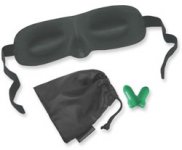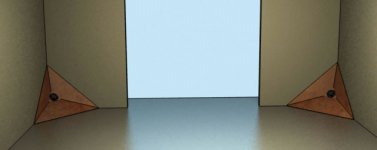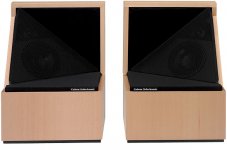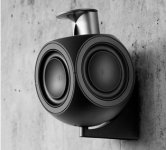Colin said:TJ mentioned it in one of his later articles for HFN and I've read other people come to the same conclusion.
so perhaps this is REALLY the way to go
I mean not to try to mask (acoustically) the room but rather to mask the speakers instead.
in other words not to take the room out of the "sound equation" but the speakers instead
best,
graaf
graaf said:I mean not to try to mask (acoustically) the room but rather to mask the speakers instead.
in other words not to take the room out of the "sound equation" but the speakers instead
See attachment - Problem solved! Now I can lay down on that mattress we discussed in an earlier post and take that nap!!

Attachments
c2cthomas said:
See attachment - Problem solved! Now I can lay down on that mattress we discussed in an earlier post and take that nap!!

sweet dreams!
c2cthomas said:
See attachment - Problem solved! Now I can lay down on that mattress we discussed in an earlier post and take that nap!!

And in this position the second matress hanging above you will get much closer to your head, dramatically increasing the channel separation, while being close to the floor liberates you from many room mode problems.
Do some recordings with this and it will be heaven on earth:
http://www.thomann.de/de/haun_mbnm622_stejecklin_grenzflaeche.htm
Like a Klipschorn?MisterTwister said:how about front horn enclosure placed in the corner, closely coupled to walls. whole room would work as horn.
MisterTwister said:how about front horn enclosure placed in the corner, closely coupled to walls. whole room would work as horn.
great idea!
and absolutely worth trying
it would be not so much different from Carlsson OA-52 positioned in the corner
and perhaps even better
best,
graaf
Attachments
Brett said:
Like a Klipschorn?
a bit different
but I agree that Klipschorn and other corner horns (Lowther et a.) are viable alternative methods
I've already said above:
high directivity speaker in (or close to) a room corner and significant toe-in is also a reasonable method of dealing with early relfections, of "speaker-room interface", like in case of classic corner horns
best,
graar
Very nice MisterTwister!MisterTwister said:how about front horn enclosure placed in the corner, closely coupled to walls. whole room would work as horn.
I am working on similar idea but using Ted Jordans line array concept - corner placed - waveguide baffle - 2 JX6 speakers per array.
Perhaps with this sound card to tune things with using the PC. http://www.cluboc.net/reviews/sound/Auzentech/Prelude/index.asp:

el'O - 485 Euro's
 - but Thanks for thinking of me
- but Thanks for thinking of me graaf,
I listened to these speakers the other day.
http://www.bremen.se/main/HT12.0/HT12.0.html
Same positioning as your set up.. only higher up on the wall.. about ear height.
Nice dissapearing act.
/Peter
I listened to these speakers the other day.
http://www.bremen.se/main/HT12.0/HT12.0.html
Same positioning as your set up.. only higher up on the wall.. about ear height.
Nice dissapearing act.
/Peter
Pan said:
interesting idea, thanks for the link
they remind me of Beloab 3, which can also be hanged at the opposite walls
best,
graaf
Attachments
I am working since some years by the topic loudspeaker and room as one system . My idea was to resizing the playback room virtually. The playback room dimensions become include into a wave field synthesis approach. The approach needs a huge speaker field behind the screenwall. It aimed retards the radiation of dedicated wavefronts.
Per example: If your playback room lower as the opera house, the speaker field retards the ceyling reflection radiation until its arrive in the same temporal behaviour regarding the direct wave as in the opera house. The same by all wall reflections creating the size impression of the opera.
It works in principle likely the sound projectors, but by enlarged wall and not producing virtually loudspeakers, but the source itself, henceforth.
The procedure is patented, but isnt purchasable until. Is described on the www.syntheticwave.de website.
Per example: If your playback room lower as the opera house, the speaker field retards the ceyling reflection radiation until its arrive in the same temporal behaviour regarding the direct wave as in the opera house. The same by all wall reflections creating the size impression of the opera.
It works in principle likely the sound projectors, but by enlarged wall and not producing virtually loudspeakers, but the source itself, henceforth.
The procedure is patented, but isnt purchasable until. Is described on the www.syntheticwave.de website.
syntheticwave said:I am working since some years by the topic loudspeaker and room as one system .
(...)
Is described on the www.syntheticwave.de website.
very interesting but if I understand correctly the information contained at this website: http://www.syntheticwave.de/Wave-Field-Synthesis for 3D home audio loudspeaker reproduction.htm
it is not yet feasible in practice?
It would be possible by the state of art, but the effort would be huge. For widely aliasing free reproduction would be need 1296 single loudspeakers, each guided by own microprocessor, D/A and an amplifier.
wow! 1296 loudspeakers?
great idea but appears to be completely impractical
best,
graaf
graaf said:
very interesting but if I understand correctly the information contained at this website: http://www.syntheticwave.de/Wave-Field-Synthesis for 3D home audio loudspeaker reproduction.htm
it is not yet feasible in practice?
...it would be feasible, no technical constrains remain. But it would be a huge effort. No producer wants to bear the risk for invest in a prototype because all say it wouldn't be a market for such expensive installations. I am by other opinion, but that doesn't matter.

graaf said:
wow! 1296 loudspeakers?
great idea but appears to be completely impractical
best,
graaf
No, why? If you take 2 watt speakers you can produce sound pressures far beyond the pain limit. Because of the good air resistance adaption of the huge resulting diaphragm only very small elevations would be needed. A partitioned layer membrane as electrostat would be a payable solution.
Hello Helmut!
I read that the Fraunhofer Institute is trying to switch to NXT speakers to keep the number of speakers lower without risking lobing. Recently I heard the Göbel at the Highend in Munich this year, and I find it does VERY well, apart from the instable imaging and the fact that it comes to its limits even before reaching full "room level".
Oliver
I read that the Fraunhofer Institute is trying to switch to NXT speakers to keep the number of speakers lower without risking lobing. Recently I heard the Göbel at the Highend in Munich this year, and I find it does VERY well, apart from the instable imaging and the fact that it comes to its limits even before reaching full "room level".
Oliver
syntheticwave said:
No, why? If you take 2 watt speakers you can produce sound pressures far beyond the pain limit. Because of the good air resistance adaption of the huge resulting diaphragm only very small elevations would be needed. A partitioned layer membrane as electrostat would be a payable solution.
imagine manufacturing process of a device comprising 1296 speakers, imagine cost of assembly, of shipment, complexity of the issue of installation if such a device at home (in a special dedicated room only?)
so yes, technically it is feasible
but economically and commercially it will never be I'm afraid
fortunately it doesn't mean that nothing can be improved
in this thread we're discussing various solutions that take into account the issues of loudspeaker and room (normal living room) interaction to achieve much better results in terms of naturalness and realism of spatial presentation of sound than standard solutions
fortunately 1296 speakers with special electronics are not neeeded for that - in fact stategically positioned just two fullrange drivers without special electronics can do the job
best,
graaf
MisterTwister said:how about front horn enclosure placed in the corner, closely coupled to walls. whole room would work as horn.
I don't think that this is a good idea. While the bass OUTPUT would be enhanced this way, the corners are not good places for the mids and highs, they need to be moved further into the room away from the walls etc. and closer together than the corners.
Best is to just seperate the lows from the rest and deal with them seperately - they are seperate acoustical problems anyways. The mains can go low in freq, but they must be augmented with widely dispersed subs. And horns, while great fro higher frequencies, aren't much of an advantage for LFs. When multiple subs are used each sub deos not have to be that big - you make up for level through quantity.
- Home
- Loudspeakers
- Multi-Way
- The Advantages of Floor Coupled Up-Firing Speakers



